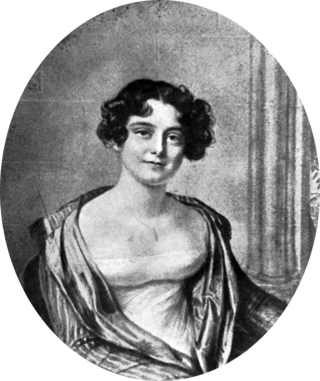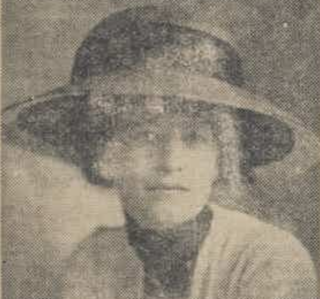Ophir is the name of a locality in New South Wales, Australia in Cabonne Shire.

Jane, Lady Franklin was the second wife of the English explorer Sir John Franklin. During her husband's period as Lieutenant-Governor of Van Diemen's Land, she became known for her philanthropic work and her travels throughout south-eastern Australia. After John Franklin's disappearance in search of the Northwest Passage, she sponsored or otherwise supported several expeditions to determine his fate.

The State Library of Tasmania is the reference, special collections, research and public lending library in the Tasmanian capital of Hobart, Australia. It is part of Libraries Tasmania. Libraries Tasmania includes a state-wide network of library services, community learning, adult literacy and the State’s archives and heritage services.

Carol Jerrems was an Australian photographer/filmmaker whose work emerged just as her medium was beginning to regain the acceptance as an art form that it had in the Pictorial era, and in which she newly synthesizes complicity performed, documentary and autobiographical image-making of the human subject, as exemplified in her Vale Street.
The Colonial Times was a newspaper in what is now the Australian state of Tasmania. It was established as the Colonial Times, and Tasmanian Advertiser in 1825 in Hobart, Van Diemen's Land by the former editor of the Hobart Town Gazette, and Van Diemen's Land Advertiser, Andrew Bent. The name was changed to Colonial Times in 1828. In 1857 the title was absorbed into the Hobart Town Mercury.
The Courier is a newspaper founded in 1827 in Hobart, Tasmania, as The Hobart Town Courier. It changed its name to The Hobart Town Courier and Van Diemen's Land Advertiser in 1839, settling on The Courier in 1840.

The Hotel Grand Chancellor Hobart is a twelve-storey hotel located on the waterfront of Hobart, Tasmania, Australia.
Charles Tiffin (1833–1873) was an English architect, who spent most of his career in Queensland, Australia where he held the post of Queensland Colonial Architect.
The Allport Library and Museum of Fine Arts is a museum library in Hobart, Tasmania, Australia. Managed by Libraries Tasmania, it is located inside the State Library of Tasmania building. It represents one of the largest collections of Tasmanian colonial and pre-Colonial life, and also holds a collection of rare British and European porcelain, furniture and books. It was opened in 1972 and entrance is free to the public.
The Bushrangers; or Norwood Vale was the first play with an Australian theme to be published and staged in Australia.

James Foote was a politician in Queensland, Australia. He was a Member of the Queensland Legislative Assembly and a mayor of the Borough of Ipswich.

John Clarke Foote (1822–1895) was a politician in Queensland, Australia. He was a member of the Queensland Legislative Council.

Henry Hunter (1832–1892) was a prominent architect and civil servant in Tasmania and Queensland, Australia. He is best known for his work on churches. During his life was also at various times a state magistrate of Tasmania, a member of the Tasmanian State Board of Education, the Hobart Board of Health, a Commissioner for the New Norfolk Insane Asylum and President of the Queensland Institute of Architects.

Florence Aline Rodway was an Australian artist best known for her portraits. Born in the Tasmanian city of Hobart, she was the second of six children to Leonard Rodway and Louisa Susan, née Phillips. She studied painting at the Hobart Technical College ; after two years her work was sent to London, and she was awarded a three-year scholarship to study painting at the Royal Academy of Arts, London. She is best known for having painted portraits of notable figures in Australian history, including Dame Nellie Melba, William Bridges, J. F. Archibald and Henry Lawson.

Henry Miller (1785–1866) was the first commandant of the Moreton Bay penal colony in Queensland, Australia.
Clonmel was a three-masted wooden paddle steamer built in Birkenhead, England, in 1836. Clonmel was one of the first steam-powered vessels on the Australian coast. It ran aground in the early hours of 2 January 1841, or the 3rd. and was wrecked on what is now known as Clonmel Island in Corner Inlet, Victoria. This was only its second voyage from Sydney.

Mary Morton Allport was an English Australian artist who is thought to be Australia's first professional female artist, lithographer, etcher and engraver. Allport painted landscapes and portrait miniatures.

James Henry Ashton was a circus proprietor in Australia. He founded Ashton's Circus which is still operated by his descendants.
William Henry Breton was a lieutenant in the Royal Navy who wrote the memoirs Excursions in New South Wales, Western Australia and Van Dieman's Land, during the years 1830, 1831,1832 and 1833, first published in 1833 and Scandinavian Sketches, or, A Tour in Norway, published in 1835. The books resulted from private visits to Australia, or New Holland as it was then known, in 1829-30 and 1832-33 and to Norway, Sweden and Russia in 1834.











